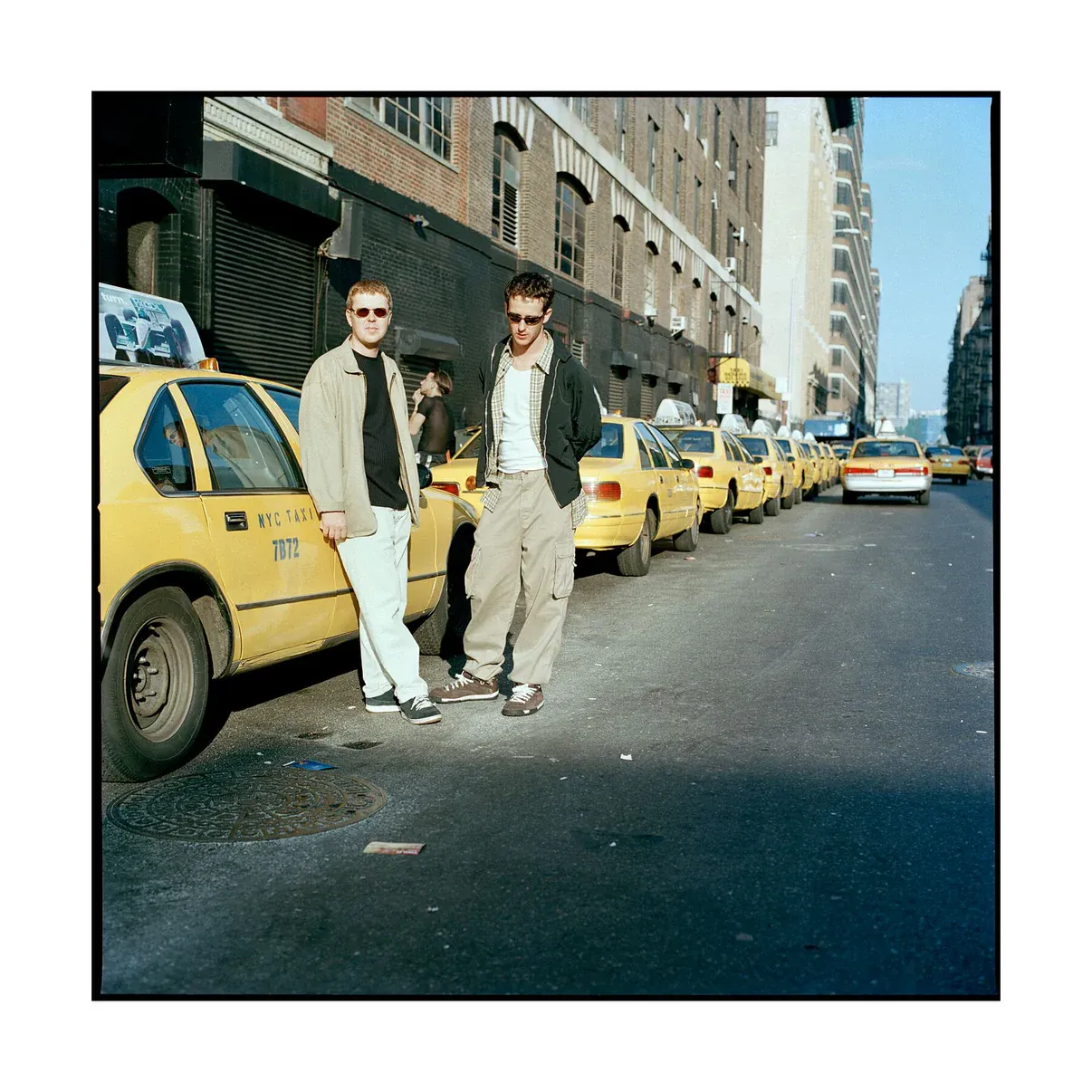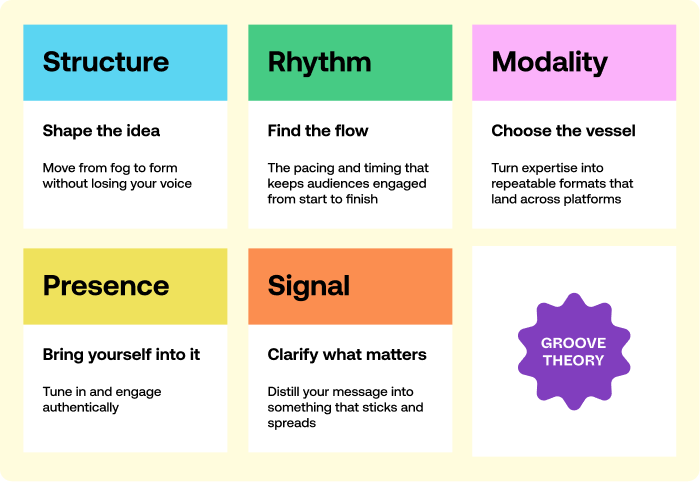Groove Theory #13: West on 27th
I'm Howard Gray, founder of Wavetable, the experiential learning studio.
Currently: heading to Barcelona to run an executive workshop at IBTM World; marveling at Ikea’s most enduring products
Head towards the river on West 27th St in Manhattan and eventually you'd find it. A cavernous warehouse turned nightclub. No VIP sections, no bottle service, no distractions. Just 1,500 people, a sound system that exposed every detail, and opening hours from midnight until noon.
If you were in NYC in the late 90s and early 2000s, you know the place. This was Twilo.
The club had installed the Phazon - the first fully digital sound system of its kind. DJs would leave the booth mid-set just to hear their records on the dancefloor. But its extraordinary combo of volume and clarity also meant there was nowhere to hide.
The space had history. It used to be Sound Factory, where Junior Vasquez, Danny Tenaglia, and Frankie Knuckles had built their reputations. Twilo was the crown jewel of New York club culture.

Two DJs from the UK - Sasha and John Digweed - were offered the last Friday of every month.
The Tension
Marathon DJ sets already existed in New York. But Sasha and Digweed were bringing something different: a particular flavour of European progressive house and trance. Melodic, patient, building across hours rather than hammering peaks.
Their residency began with a lukewarm reception. The format was right - Twilo was built for extended DJ sets. But the sound was foreign. Would New Yorkers trust two Brits to take them on a ten-hour journey through unfamiliar territory?
Step Into It
When your format already exists but your approach is different, the instinct is to compromise. Give them what they're used to, with minor variations.
But sometimes the move is the opposite: double down on what makes you distinctive, and trust the format to hold it.
The question becomes: can you find a method - or even a partner - whose strengths can sustain the parts you can't?
The Groove: Rhythm
Sasha and Digweed came from different places musically.
Sasha had cut his teeth at Manchester's Haçienda during the acid house explosion, playing everything - piano house, Italo, breakbeats. He was an emotional DJ, searching for the feeling inside a track.
Digweed had been building technical precision for years. When Renaissance club founder Geoff Oakes heard his demo tape in 1992 he introduced him to Sasha. They spent four years learning how their differences could work as one system.
One of a number of classic mix albums
Sasha was the emotional architect. He'd find the melody hiding inside a techno track, stretch it, make it sing. His record box was chaos - vinyl everywhere, nothing in sleeves. One morning outside the club after a set, he put the box in a taxi, turned to talk to someone, turned back - the cab had already driven off with everything inside.
Digweed was the rhythmic foundation. Once he locked a groove, it became hypnotic. His mixing was so precise you couldn't tell where one track ended and another began.

In an 8-10 hour set, the planning had to scale differently. You couldn't just show up with peak-time records. You had to think in movements. Where would the big moments land? Hour three? Hour seven? "You really need to be focused," Digweed explained, "making sure you have those moments where you send the crowd crazy, but also moments to give the crowd time to rest."
Hit your peaks too early, you have nowhere left to go. Rest too long, you lose the room.
Their approach proved itself under pressure. One night there was a fire. Everyone evacuated. Two hours later, when the crowd finally came back in, the energy was insane. They kept playing past midday.
Word spread. This was pre-phones, pre-social media. By 2001, Digweed could say: "You'd have 4000 people in there going nuts, but they weren't looking at us, and they weren't all on their phones; they were just on the dance floor."
They'd convinced New York to trust their groove.
1. Complementary strengths create rhythm that neither person can sustain alone.
Sasha's emotional risk-taking and Digweed's technical precision made the ten-hour format possible. One person can hit peaks. Two people with different instincts can create an arc that holds for the long haul.
2. Trust compounds over time, not overnight.
They'd been working together for four years before Twilo. The lukewarm start makes sense - New York had to learn to trust them, just like they'd learned to trust each other. Rhythm at scale requires history. Play long-term games with long-term people.

Rhythm is one of the five elements of Groove Theory. Learn more >
The Release
The breakthrough came not when Sasha and Digweed tried to sound like New York house DJs, but when they convinced New Yorkers to trust their own sound. The crowd didn't want an imitation. They wanted to experience what made these two distinctive - together.
Different rhythms. Different strengths. One groove that took ten hours to reveal itself, built on four years of partnership before that.
Here's why this matters now: small teams and creative duos can do what used to require entire organisations. Not because "small is beautiful" - but because when you find someone whose strengths complement yours, you can move at the speed of trust instead of the speed of bureaucracy.
The AI moment makes this more true, not less. Tools handle execution. Partnerships handle judgment, taste, and the ability to hold a room for ten hours when the format demands it. Two people who know each other's moves can adapt faster, take bigger risks, and sustain longer arcs than larger teams trying to coordinate. Most people still underestimate this.
The question isn't whether your approach will work when something similar already exists. It's whether you and your partners have the complementary strengths to sustain it longer than anyone expects.
Howard
Extended Mix
- Proof of work: In 1993, Digweed's demo tape for Renaissance club founder Geoff Oakes was made under the name 'DJ JD'. The cassette tape was 90 minutes long - no scrolling, no skipping. Oakes listened through Side A, thought it was good. But 55 minutes in, on Side B, he heard something extraordinary. A blend between two tracks that made him stop and call the number scrawled on the tape. One condition: Digweed had to use his real name. 'DJ JD' felt generic. He then met Sasha at Renaissance, and the rest is history.
- The tools changed but the approach remained. Sasha pioneered digital DJing with Ableton Live. "You program a beat and random stuff starts to happen – you get amazing accidents," he said. Digweed took a different path: his radio show "Transitions" has run for over 1,100 episodes - more than twenty years of consistency, each and every week.
- Different fields, same principles. John's older brother George Digweed is a 28-time (!) World Clay Shooting Champion - arguably the greatest competitive shooter who ever lived. Two brothers both reached the peak of disciplines that demand precision, timing, and the ability to sustain performance over extended duration. "He's the best that the world has ever seen in that sport," John said. "The one and only time I shot a gun I got 7/10, so not bad. I've listened to my brother try and DJ and he needed shooting after what I heard!"
No spam, no sharing to third party. Only you and me.

Member discussion